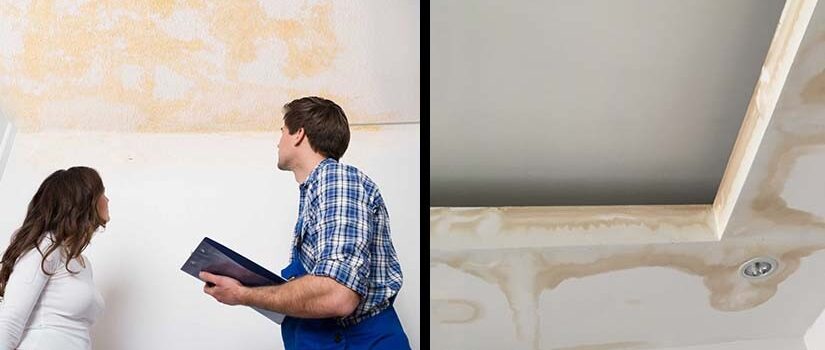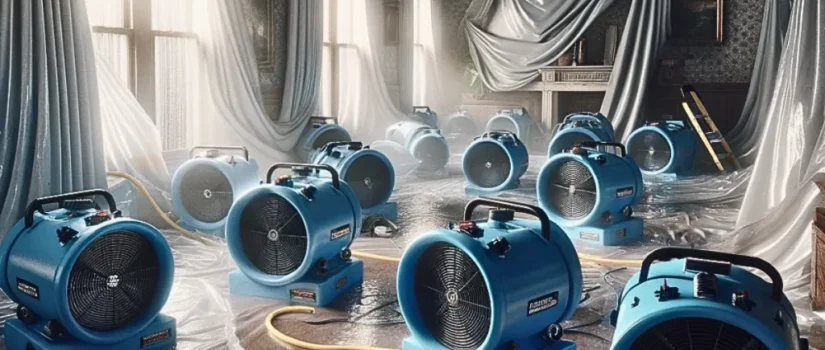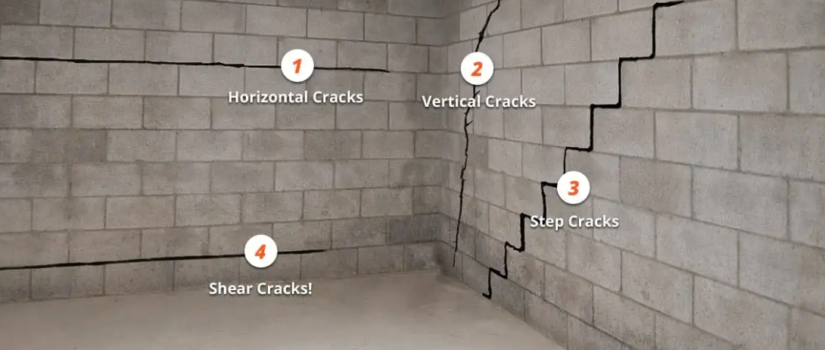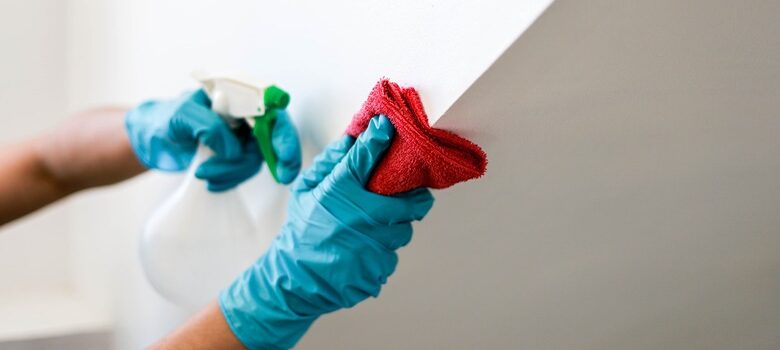
26 Jan Top 10 Common Mistakes to Avoid During Flood Repair and Restoration
Top 10 Common Mistakes to Avoid During Flood Repair and Restoration
Introduction
Floods can cause devastating damage to homes, leaving homeowners with the daunting task of repair and restoration. While it’s natural to want to act quickly, rushing into the process without proper knowledge can lead to costly mistakes. This guide will help you navigate flood repair effectively by highlighting the top 10 common mistakes to avoid. By steering clear of these pitfalls, you can ensure a safer, more efficient restoration process that saves you money and preserves your home’s integrity.
Flood damage is more than just waterlogged furniture and soaked carpets; it involves dealing with structural issues, potential health hazards, and long-term property devaluation if not handled correctly. Understanding the intricacies of flood repair and avoiding common pitfalls can make the difference between a smooth recovery and a prolonged, stressful ordeal.
Table of Contents
- Delaying the Water Removal Process
- Not Documenting the Damage Properly
- Using Incorrect Cleaning Methods
- Ignoring Mold Growth
- Overlooking Structural Damage
- Not Hiring Professional Help When Needed
- Failing to Address Electrical Damage
- Skipping the Dehumidification Process
- Using Inappropriate Materials for Repairs
- Not Preparing for Future Floods
Common Flood Repair Mistakes to avoid during cleanup and restoration
1. Delaying the Water Removal Process
Time is of the essence when dealing with flood damage. The longer water sits in your home, the more damage it can cause. Delaying water removal increases the risk of structural damage, mold growth, and electrical hazards. It’s crucial to act quickly and begin the water extraction process as soon as it is safe to do so.
Time is of the essence when dealing with flood damage. The longer water sits in your home, the more damage it can cause. Delaying water removal increases the risk of structural damage, mold growth, and electrical hazards. It’s crucial to act quickly and begin the water extraction process as soon as it is safe to do so.
Why Immediate Water Removal is Critical
Water can seep into walls, floors, and furniture, causing them to warp, swell, and become structurally unsound. Within just 24-48 hours, mold spores begin to grow, leading to health risks and further damage to your property. The longer you wait, the more extensive and expensive the repairs will become.
Professional water extraction services can help mitigate this damage by using specialized equipment to remove water quickly and efficiently. However, even before professionals arrive, there are steps you can take to begin the process, such as using wet/dry vacuums, mops, and towels to remove as much water as possible.

2. Not Documenting the Damage Properly
Proper documentation of flood damage is essential for insurance claims and future repairs. Failing to document the damage thoroughly can lead to disputes with your insurance company and potential financial losses. Take photos and videos of all affected areas, keep a detailed inventory of damaged items, and save receipts for any expenses related to the damage and repairs.
Best Practices for Documenting Flood Damage
When documenting damage, focus on capturing the extent of the flooding in every room, as well as close-ups of specific damage, such as water stains, mold, warped flooring, and damaged furniture. Make sure to photograph and videotape the exterior of your home, especially if there is visible structural damage, like foundation cracks or roof damage caused by the flood.
Additionally, keeping a log of your interactions with insurance adjusters, contractors, and any receipts for emergency services can help support your claims. In many cases, insurers require proof of all damages before they will approve a claim, so the more thorough your documentation, the better your chances of receiving full compensation.
If you’re unsure how to proceed, consider hiring a public adjuster, who can help navigate the complex process of filing a claim and ensure that you get the compensation you’re entitled to.
3. Using Incorrect Cleaning Methods
Cleaning up after a flood is not as simple as using a mop and bucket. Incorrect cleaning methods, such as using bleach on porous surfaces, can cause more harm than good. Bleach, for instance, can fail to kill mold spores deep within porous materials and can also corrode certain surfaces. Instead, use cleaning solutions specifically designed for flood damage, and consider hiring professionals for deep cleaning.
Understanding the Risks of Improper Cleaning
When floodwater enters your home, it often carries contaminants, including bacteria, viruses, and chemicals from sewage and industrial runoff. Simply wiping down surfaces with household cleaners is insufficient to remove these harmful substances, which can linger and pose health risks long after the water is gone.
Using incorrect cleaning agents can exacerbate these problems. For example, bleach is a common disinfectant but is not effective against all types of mold and can damage materials like wood and drywall, making them more susceptible to future damage. Instead, look for EPA-approved antimicrobial cleaners that are safe for use on the materials in your home.
In cases of severe contamination, such as when floodwater contains sewage, it’s often best to dispose of affected materials, especially porous items like carpets, upholstery, and drywall, rather than attempting to clean them. Professional cleaning and restoration services have the tools and expertise to properly sanitize and restore your home.
4. Ignoring Mold Growth
Mold can begin to grow within 24-48 hours after a flood, making it one of the most immediate concerns following water damage. Ignoring mold growth can lead to serious health risks and further property damage. Regularly inspect for mold during the repair process and use appropriate remediation techniques to remove it.
Health Risks Associated with Mold
Mold spores can spread rapidly, especially in damp environments like those left behind after a flood. Mold exposure can cause a variety of health problems, including respiratory issues, allergic reactions, and in severe cases, neurological problems. This is particularly dangerous for individuals with asthma, allergies, or weakened immune systems.
To prevent mold growth, it’s essential to dry out your home as quickly as possible, using dehumidifiers and fans to reduce moisture levels. If mold is already present, it’s crucial to address it immediately. Small areas of mold can often be cleaned with a mixture of water and detergent, but for larger infestations, professional mold remediation services are necessary to safely remove it and prevent regrowth.
Steps for Mold Remediation
Mold remediation involves more than just cleaning the visible mold. It often requires removing and replacing contaminated materials, such as drywall, insulation, and carpeting, and addressing the source of moisture that allowed mold to grow in the first place. For example, if mold is found in your walls, it may be necessary to remove sections of drywall to treat the underlying framing and insulation.
After the mold has been removed, it’s essential to keep your home dry and well-ventilated to prevent future growth. Regular inspections, especially in high-humidity areas like basements and bathrooms, can help you catch mold early before it becomes a significant problem.
Refer to the EPA’s guidelines on mold remediation for more information.

5. Overlooking Structural Damage
Floods can compromise the structural integrity of your home, including the foundation, walls, and floors. Overlooking this damage can result in long-term safety hazards and costly repairs down the line. It’s crucial to have a professional evaluate the structural damage before beginning any repairs to ensure the safety and stability of your home.
Identifying Signs of Structural Damage
Structural damage isn’t always immediately apparent after a flood. Some signs, like cracks in the foundation or warping in floors and walls, may take days or even weeks to become noticeable. It’s essential to be vigilant and look for any changes in your home’s structure over time.
Common indicators of structural damage include:
- Cracks in walls, especially near doors and windows
- Uneven or sagging floors
- Doors and windows that no longer open or close properly
- Visible shifts in the foundation
- Bowing or leaning walls
If you notice any of these signs, it’s crucial to contact a structural engineer or a contractor with experience in flood damage to assess the extent of the damage and recommend the necessary repairs. Ignoring structural issues can lead to more severe problems, including the risk of collapse.
The Importance of Professional Assessments
Even if your home appears to be structurally sound, it’s advisable to have it inspected by a professional after a flood. Structural engineers can identify hidden damage that may not be visible to the untrained eye, such as compromised load-bearing walls or weakened foundations.
Professional assessments can also provide damage documentation, which may be necessary for insurance claims or when selling your home. Ensuring that your home is structurally sound is not just about safety; it’s also about preserving the value of your property.

6. Not Hiring Professional Help When Needed
While some flood repairs can be handled by homeowners, certain tasks require professional expertise. For example, electrical repairs, mold remediation, and structural assessments should always be conducted by certified professionals. Attempting DIY repairs in these areas can be dangerous and may void your insurance coverage. When in doubt, hire a professional to ensure the job is done correctly.
When to Hire a Professional
Certain aspects of flood repair go beyond the scope of most DIY enthusiasts. These include:
- Electrical repairs: Water exposure can make electrical systems dangerous. Only a licensed electrician should handle repairs to your home’s wiring, outlets, and appliances.
- Mold remediation: As mentioned earlier, mold removal can be complex and dangerous. Professional remediation services have the necessary equipment and knowledge to remove mold safely.
- Structural repairs: Repairing structural damage requires specialized skills and knowledge. Hiring a professional ensures that repairs are done correctly and safely.
Even if you’re comfortable handling minor repairs yourself, it’s wise to consult with a professional to ensure that all aspects of the flood damage are addressed. Professionals can also help you navigate the complexities of insurance claims and provide peace of mind that your home is being restored properly.
The Risks of DIY Repairs
While DIY repairs can save money upfront, they can lead to costly mistakes if not done correctly. For example, improper electrical repairs can create fire hazards, and insufficient mold remediation can leave your home vulnerable to future infestations. Additionally, if repairs are not done to code, they may not be covered by insurance, leaving you liable for any future issues.
By hiring professionals for critical repairs, you can avoid these risks and ensure that your home is restored to its pre-flood condition safely and effectively.
7. Failing to Address Electrical Damage
Water and electricity are a dangerous combination. Floodwaters can damage your home’s electrical system, creating a significant fire hazard. Before turning the power back on, have a licensed electrician inspect your electrical system and make any necessary repairs. Avoid using appliances or outlets that have been submerged until they have been properly inspected and repaired.
Assessing Electrical Damage After a Flood
Floodwaters can cause extensive damage to your home’s electrical system, including:
- Short circuits: Water can cause short circuits in your wiring, leading to potential fire hazards when the power is restored.
- Corroded wiring: Prolonged exposure to water can corrode wires, making them unsafe to use.
- Damaged outlets and appliances: Water can enter outlets and appliances, damaging internal components and creating shock hazards.
It’s crucial to turn off the power at the breaker box and avoid using any electrical devices until your system has been thoroughly inspected. A licensed electrician can assess the damage, replace any corroded or damaged components, and ensure that your electrical system is safe to use.
Precautions to Take When Handling Electrical Damage
Never attempt to assess or repair electrical damage yourself unless you are a licensed electrician. The risks of electric shock, fire, and further damage are too great. Always prioritize safety and rely on professionals to handle electrical issues after a flood.
Additionally, consider upgrading your electrical system with flood-resistant components, such as elevated outlets and waterproof wiring, to minimize damage in future floods. These upgrades can help protect your home and reduce the risk of electrical fires.

8. Skipping the Dehumidification Process
Even after the water has been removed, high humidity levels can continue to cause damage to your home. Skipping the dehumidification process can lead to mold growth, wood warping, and other moisture-related issues. Use dehumidifiers and fans to thoroughly dry out your home, and keep an eye on humidity levels until the area is completely dry.
The Importance of Dehumidification
After a flood, moisture can linger in walls, floors, and furniture long after the visible water has been removed. This moisture can create an environment conducive to mold growth, wood rot, and other forms of damage. Dehumidification helps to remove this residual moisture and prevent further problems.
Commercial-grade dehumidifiers and fans are essential tools for drying out your home. These devices can lower the humidity levels in your home, speeding up the drying process and reducing the risk of mold and mildew. It’s important to keep these devices running continuously until your home is completely dry.
Monitoring Humidity Levels
To ensure that your home is dry, it’s essential to monitor humidity levels. The ideal indoor humidity level is between 30-50%. Anything above 60% can promote mold growth and other moisture-related issues. You can use a hygrometer to measure the humidity levels in your home and adjust your dehumidification efforts accordingly.
In some cases, it may take several weeks for your home to fully dry out, especially in areas like basements and crawl spaces. Patience is key; skipping the dehumidification process or stopping it too soon can result in costly repairs down the line.

9. Using Inappropriate Materials for Repairs
When repairing flood damage, it’s important to use materials that can withstand future flooding. Using inappropriate materials, such as traditional drywall in a flood-prone area, can result in repeated damage and costly repairs. Instead, consider using flood-resistant materials like water-resistant drywall, tile flooring, and moisture-resistant insulation.
Selecting the Right Materials for Flood Repair
Choosing the right materials for flood repair is crucial to ensuring the longevity and durability of your repairs. Here are some flood-resistant materials to consider:
- Water-resistant drywall: Unlike traditional drywall, water-resistant drywall is designed to withstand moisture without deteriorating. It’s an excellent choice for basements and other flood-prone areas.
- Tile flooring: Tile is a non-porous, water-resistant material that is ideal for areas that may experience flooding. Unlike wood or carpet, tile won’t absorb water or sustain long-term damage from moisture.
- Moisture-resistant insulation: Standard insulation can become waterlogged and lose its effectiveness after a flood. Moisture-resistant insulation, such as closed-cell spray foam, is a better choice for flood-prone areas.
Avoiding Common Material Mistakes
One of the most common mistakes homeowners make is using the same materials they had before the flood. If those materials were damaged by floodwater, it’s a sign that they may not be suitable for areas prone to flooding. Upgrading to flood-resistant materials can save you time, money, and stress in the future.
Another mistake is cutting corners on materials to save costs. While it may be tempting to choose cheaper options, these materials may not hold up in the long term, leading to more repairs down the road. Investing in quality, flood-resistant materials is a smart decision that can protect your home from future damage.
10. Not Preparing for Future Floods
One of the biggest mistakes homeowners make after a flood is failing to prepare for the next one. Floodproofing your home with measures like installing sump pumps, sealing foundation cracks, and elevating electrical systems can help minimize damage in future floods. Additionally, reviewing and updating your flood insurance policy is a crucial step in protecting your home against future flooding.
Floodproofing Techniques
There are several steps you can take to floodproof your home and reduce the risk of future damage:
- Sump pumps: Installing a sump pump in your basement can help remove water quickly in the event of a flood. Consider a model with a battery backup to ensure it continues to operate during power outages.
- Foundation sealing: Cracks in your foundation can allow water to seep into your home. Sealing these cracks with waterproof sealant can help keep water out.
- Elevating electrical systems: By elevating electrical outlets, appliances, and HVAC systems above the potential flood level, you can reduce the risk of damage and make your home safer.
Reviewing Your Flood Insurance
After experiencing a flood, it’s essential to review your flood insurance policy to ensure that you have adequate coverage for future events. Flood damage is not typically covered by standard homeowner’s insurance policies, so a separate flood insurance policy is necessary.
Make sure your policy covers the full value of your home and its contents, and consider adding additional coverage if necessary. Regularly reviewing and updating your policy can help ensure that you’re prepared for future floods.
Conclusion
Flood repair is a complex process, and avoiding these common mistakes can make a significant difference in the safety, cost, and efficiency of your restoration efforts. By taking the right steps and seeking professional help when needed, you can ensure that your home is restored to its pre-flood condition and better protected against future floods.
For more tips on flood repair and prevention, explore our other articles on Flood.Repair.
Frequently Asked Questions
1. What should I do immediately after a flood to minimize damage?
Immediately after a flood, prioritize safety by turning off electricity and gas, avoiding contaminated water, and evacuating if necessary. Start water removal as soon as it’s safe, using pumps, wet/dry vacuums, and towels. Document the damage for insurance claims with photos and videos. Contact a professional water damage restoration company to assess and begin mitigation efforts.
2. How fast does mold grow after a flood, and how can I prevent it?
Mold can start growing within 24 to 48 hours after water damage. To prevent mold growth, remove standing water quickly, dry the area thoroughly using dehumidifiers and fans, and discard water-damaged porous materials like carpets and drywall. Professional mold remediation may be necessary if mold has already developed.
3. Does homeowners insurance cover flood damage repairs?
Standard homeowners insurance does not cover flood damage. You need a separate flood insurance policy through the National Flood Insurance Program (NFIP) or a private insurer. Check your policy details to understand coverage for structural damage, personal belongings, and temporary living expenses.
4. What are the biggest mistakes homeowners make after a flood?
Common mistakes include:
- Delaying water removal, leading to structural damage and mold.
- Not documenting damage properly, which can complicate insurance claims.
- Using household cleaners like bleach, which don’t effectively kill mold in porous materials.
- Overlooking structural damage, risking safety hazards.
- Skipping professional inspections, which can result in hidden long-term damage.
5. How can I tell if my home has structural damage after a flood?
Signs of structural damage include:
- Cracks in walls and ceilings
- Uneven or sagging floors
- Doors and windows that don’t close properly
- Leaning or bowing walls
- Visible foundation shifts Always have a structural engineer or flood damage expert inspect your home after significant water exposure.
6. What is the best way to dry out a flooded home?
For efficient drying:
- Use dehumidifiers and high-powered fans to reduce moisture.
- Open windows and doors to improve airflow if humidity levels are low outside.
- Remove wet materials like carpeting, drywall, and insulation.
- Monitor humidity with a hygrometer; aim for below 50% humidity to prevent mold. Professional water damage restoration companies use industrial-grade drying equipment for faster, more effective results.
7. Is it safe to clean up flood damage myself, or should I hire professionals?
While minor water damage cleanup can be done DIY, severe flooding requires professionals to handle:
- Water extraction
- Mold Remediation
- Structural drying
- Electrical safety checks
- Sanitization of contaminated areas DIY cleanup can result in missed moisture pockets, mold growth, and improper restoration, leading to costly repairs down the line.
8. What materials should I use when repairing flood-damaged areas?
For flood-resistant repairs, consider:
- Moisture-resistant drywall (e.g., cement board or mold-resistant gypsum)
- Tile or vinyl flooring instead of wood or carpet
- Closed-cell spray foam insulation, which resists water absorption
- Stainless steel or treated wood for structural repairs Using flood-proof materials helps prevent recurring damage in future floods.
9. How can I prevent future flood damage to my home?
To minimize flood damage risks:
- Install a sump pump with a battery backup.
- Elevate electrical outlets, appliances, and HVAC systems.
- Apply waterproof sealant on basement walls and foundation cracks.
- Improve drainage by cleaning gutters and installing French drains.
- Consider flood barriers or sandbags in high-risk areas. Preventative floodproofing can reduce costly repairs and protect your home from future disasters.
10. How do I file an insurance claim for flood damage?
- Document all damage with clear photos and videos before cleaning.
- List all damaged items and keep receipts for repairs and replacements.
- Contact your insurance provider immediately to start the claim.
- Work with an adjuster to assess damage and negotiate a fair settlement.
- Consider hiring a public adjuster if your claim is denied or undervalued.
The faster you document and report the damage, the smoother your claim process will be.

